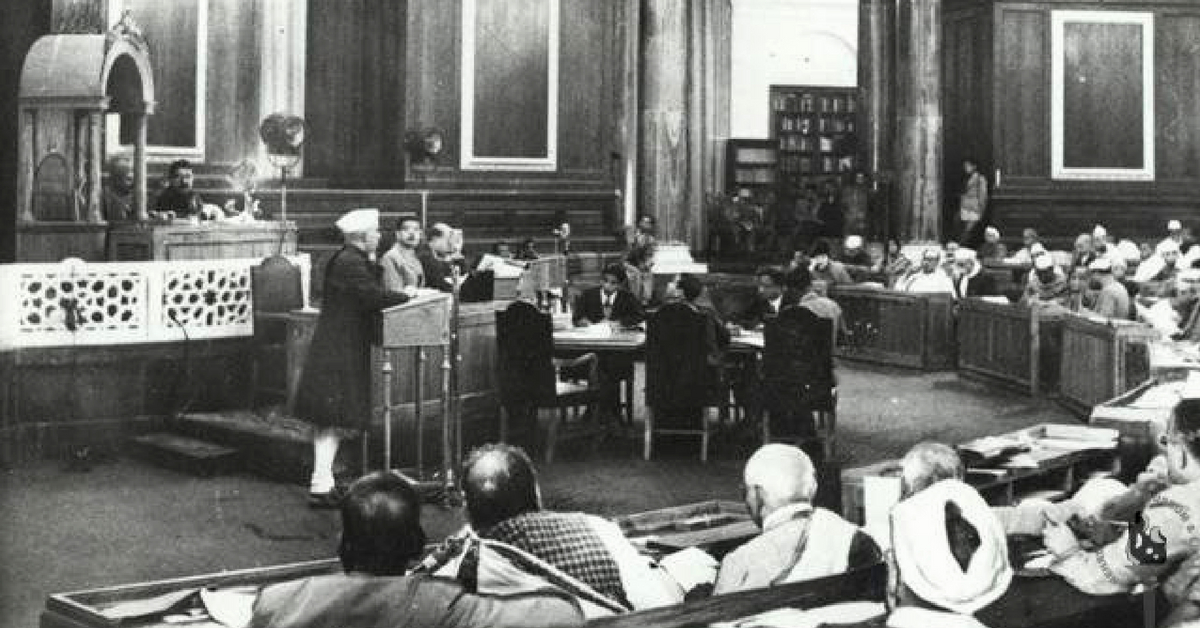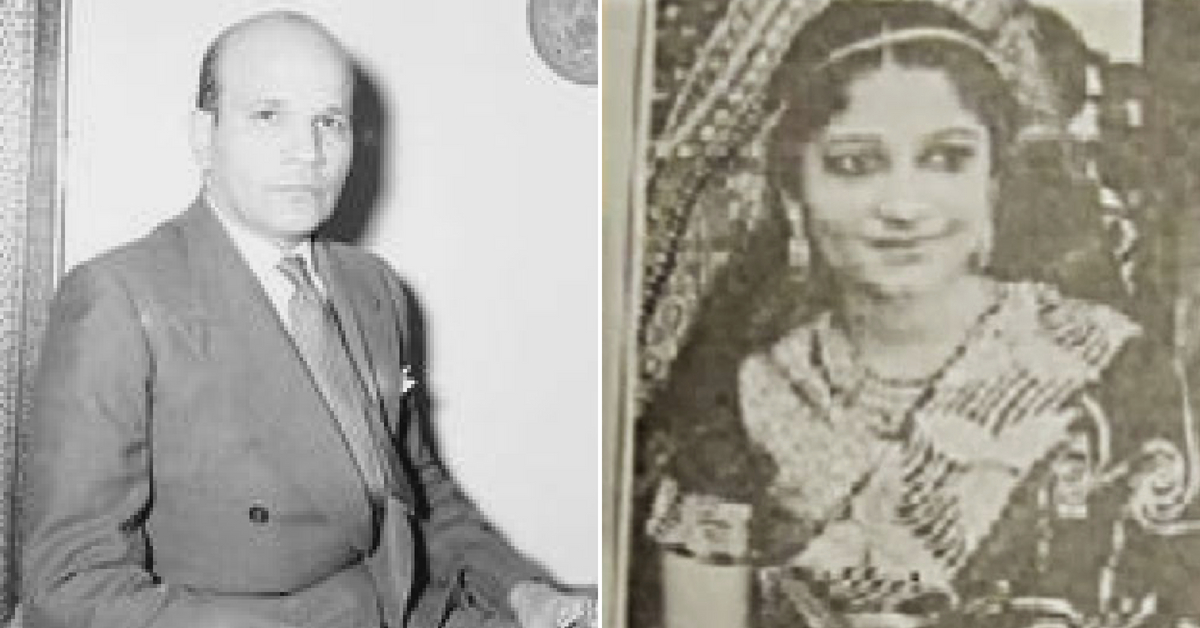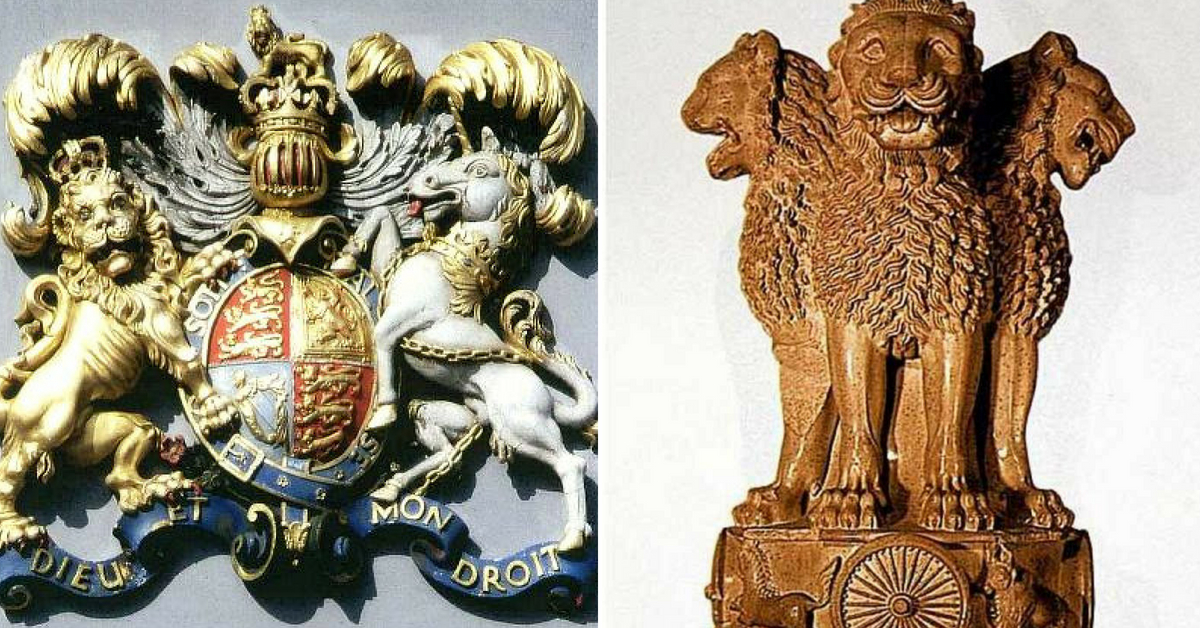How India’s Tricolour & National Emblem Took Shape Just Days Before Independence!
India was going to be a country of over 300 million people, and it was crucial to refresh their memory about the country being their own. Keeping this in mind, Jawaharlal Nehru approached Badr-Ud-Din Faiz Tyabji—an important civil servant in the Constituent Assembly—to design India's national emblem.

On the brink of independence and energised to see a fresh India—one that was free of colonial dominance on education, culture and embedded symbolism—the Indian National Congress was about to undertake a challenging task.
India was going to be a country of over 300 million people, and it was crucial to refresh their memory about the country being their own.
Keeping this in mind, Jawaharlal Nehru approached Badr-Ud-Din Faiz Tyabji—an important civil servant in the Constituent Assembly—to design India’s national emblem.
The national emblem, as we know it today, was of utmost importance as India would progress from being a British colony to a republic.
Just as it was important to finalise the national emblem before 15th August 1947, it was crucial for it to be all inclusive but not bear any colonial hangover.

Laila Tyabji, the daughter of Badr-ud-Din Tyabji writes in The Wire, “Suddenly, people realised India was going to be independent in a couple of months and we needed a national emblem. So, Jawaharlal Nehru turned to my father and said, ‘Badr, you have an eye for this sort of thing, please do something about it.’ My father set up a Flag Committee headed by Rajendra Prasad, and sent letters to all the art schools asking them to prepare designs.”
Even as the requests to design an emblem were sent to art schools across India, it was evident that their idea of symbolism and India as an independent nation was still immature.
As Laila mentions, many of the designs were inspired by the British symbol itself, but the Congress quite clearly wanted to move on from this symbol of imperialism. They needed something that could be considered “Indian,” which represented the diversity in the country and at the same time, did not exclude any community from the symbol.
Just as the committee saw the deadline to submit the design approach, Badr and his wife, Surayya struck gold.

Long before the British and the Mughals conquered parts of India, there was one emperor, who had conquered the hearts of the masses, and was loved by Hindus, Muslims and Buddhists alike. Why not then, use the symbol of this emperor, namely, Ashoka the Great, as the symbol of India?
This is how the national emblem as we know it today came to be. The four lions standing back to back represent power, courage, confidence and pride. At their base is the Dharma Chakra.
A lion of the North, the galloping horse of the West, the bull of the South and the elephant of the East appear between the wheels.
You may also like: Pritilata & Kalpana: Remembering The Unsung Heroines Who Shook The British Raj!
A blooming lotus beneath the animals and chakra symbolises the fountainhead of life and creativity. Forming an integral part of the emblem is the motto ‘Satyameva Jayate’ inscribed below the abacus in the Devanagari script. The motto upholds the principle that truth alone triumphs.
Away from the then surfacing religious tensions and yet representing everyone throughout the country, the Ashoka emblem became the perfect symbol to represent India.

As the emblem was being designed and printed, sceptical murmurs about another national symbol—that of the Indian National Flag—began to surface.
Mahatma Gandhi had originally designed the flag as a representation of religions in India, and it showcased his beloved Charkha in the foreground. However, in 1929, the symbolism was changed from representing Hindus, Muslims and other religions to sacrifices of the people (red), purity (white) and hope (green).
In 1931, the Congress adopted a new flag as its official flag. This Swaraj flag had three horizontal bands of equal measurement—saffron on the top, a white band in the middle and a green band at the bottom. Gandhiji’s charkha, in the navy blue colour, was printed on the white band. This flag became the symbol of the struggle to gain independence from the British.
While the Indian National Congress was debating various issues for an independent India, it was a foregone conclusion that the party flag would also be adopted as the national flag. But this was not to be.

“Our independence struggle had been fought under its banner. However, there was opposition to a party flag representing the nation. So, my parents were tasked with re-doing the flag, and they took the same Ashoka chakra and put it on the tricolour. Once it was done, it all seemed so natural and obvious. Originally, my mother had painted a black chakra, but Gandhiji objected, so it became navy blue,” writes Laila.
Pingali Venkayya is regarded as the designer of the Indian National Flag. He was, in fact, the designer of the Swaraj flag of the Indian National Congress. The Tyabjis modified this design by replacing Gandhiji’s charkha with the Ashoka Chakra. It can be safely said then, that jointly (although not in direct collaboration with each other), Venkayya, and Badr-ud-Din and Surayya Tyabji have designed the Indian National flag as we know it today.
You may also like: The Making of the Tricolour: Inside India’s Only Official Flag-Making Firm!
After the design was approved and finalised by the Congress on 22 July 1947, Surayya supervised the sewing of the first flag at Connaught Place in Delhi.
Trevor Royle, a historian, wrote about the design of the Tiranga in his book, The Last Days of the Raj.
“By one of those contradictions which run through India’s history, the national flag was designed by a Muslim, Badr-ud-Din Tyabji. The flag which flew on Nehru’s car that night (15 August 1947) had been specially made by Tyabji’s wife,” he mentions.
(Edited by Gayatri Mishra)
Feature image source: One India.
Like this story? Or have something to share?
Write to us: [email protected]
Connect with us on Facebook and Twitter.
If you found our stories insightful, informative, or even just enjoyable, we invite you to consider making a voluntary payment to support the work we do at The Better India. Your contribution helps us continue producing quality content that educates, inspires, and drives positive change.
Choose one of the payment options below for your contribution-
By paying for the stories you value, you directly contribute to sustaining our efforts focused on making a difference in the world. Together, let’s ensure that impactful stories continue to be told and shared, enriching lives and communities alike.
Thank you for your support. Here are some frequently asked questions you might find helpful to know why you are contributing?


This story made me
-
97
-
121
-
89
-
167











